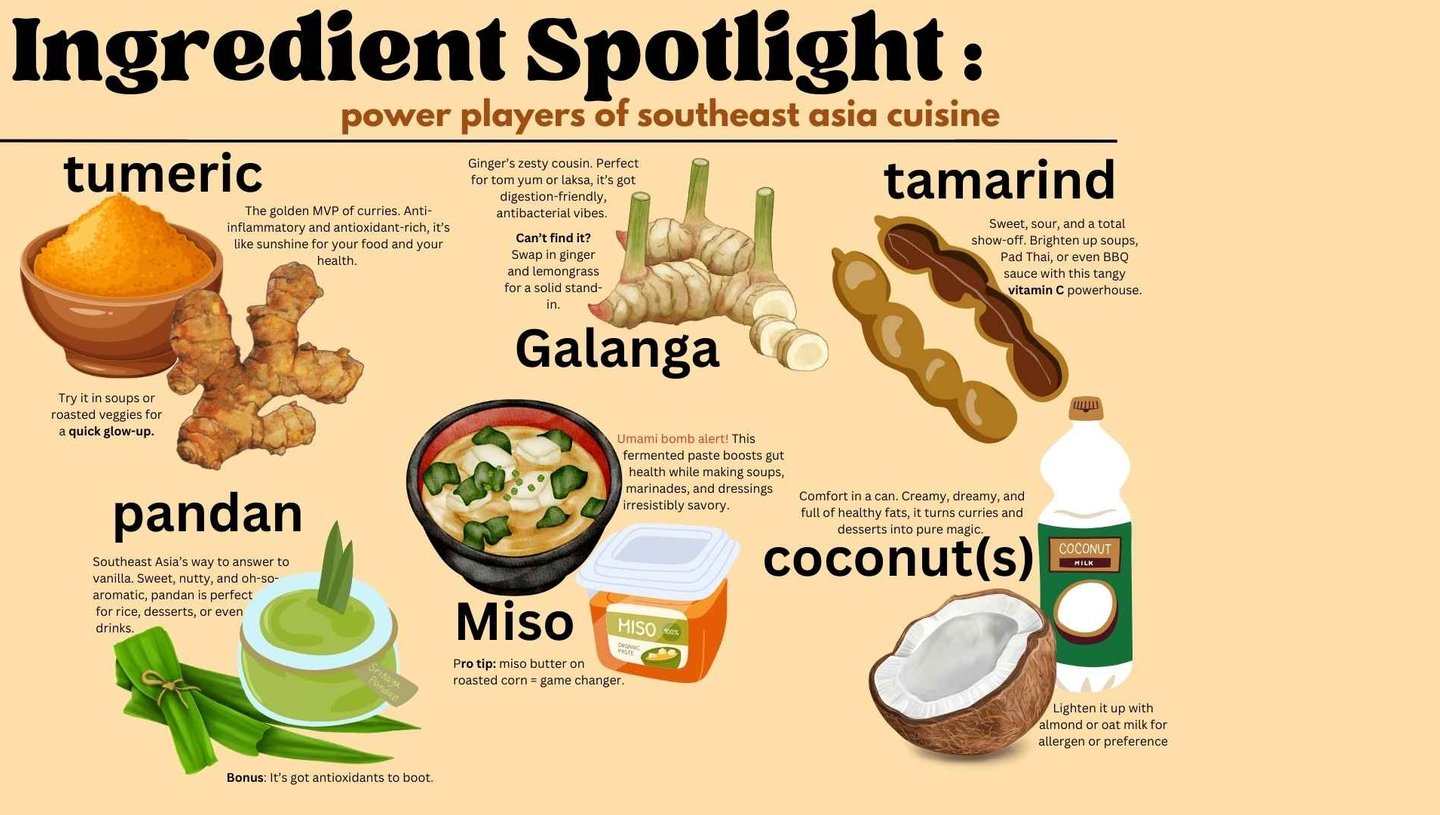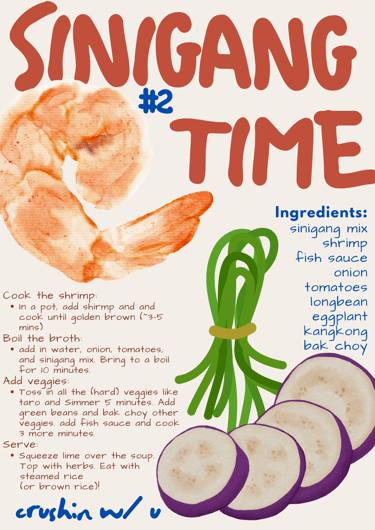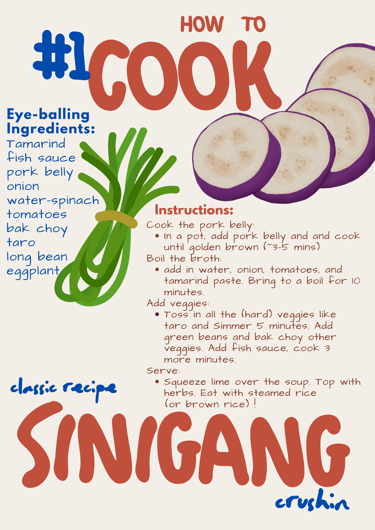South East Asia

Southeast Asia:
Where Spice Meets Soul
Southeast Asia is a carnival for the senses, where every dish bursts with bold, dynamic flavors. The aroma of lemongrass mingles with the heat of chili, while tamarind and coconut milk add layers of complexity. From the sizzling street food of Thailand to the fragrant bowls of Vietnamese pho, every meal is an invitation to explore the region's rich history and vibrant culture. This is the land of contrasts—sweet and spicy, creamy and tangy, every bite a harmonious clash of flavor profiles that leave you craving more.
The cuisines of Southeast Asia—Thai, Vietnamese, Indonesian, Malaysian, Singaporean, Filipino, and more—are a vibrant mosaic of flavors that awaken the senses. Thai curries and Vietnamese pho blend sweet, sour, and spicy into perfect harmony. Malaysian laksa and Indonesian rendang offer rich, aromatic depth, while the Philippines’ adobo and halo-halo highlight the region’s ingenuity. From bustling hawker centers to tropical beaches, Southeast Asia’s dishes tell stories of cultural fusion, resourcefulness, and love for bold, unforgettable flavors.


Mainland Southeast Asia:
Cambodia
Laos
Myanmar (Burma)
Thailand
Vietnam
Maritime Southeast Asia:
Brunei
East Timor (Timor-Leste)
Indonesia
Malaysia
Philippines
Singapore
.


Incorporating these ingredients into your cooking is easier than you might think. Sprinkle turmeric into scrambled eggs for a quick, healthful breakfast, or mix a spoonful of miso into your soup for a comforting depth of flavor. Grate galangal into your stir-fry sauce for a zesty kick, or stir coconut milk into mashed potatoes for a tropical twist. Whether you’re adding tamarind to a marinade or using pandan to infuse your rice, these Southeast Asian staples bring not only vibrant flavors but also meaningful health benefits to your table.
Ingredient Spotlight: The Heart of Fueling Comfort
Headline: Your Pantry, Powered for Health
Content:
Power Ingredients: Highlight key ingredients for south east asia.
and explain how they elevate your comfort food with nutritional benefits.
Each ingredient could link to recipes, easy swaps, and benefits, like “turmeric for anti-inflammatory properties” or “miso for gut health.”How-To Guides: Short, simple guides on how to incorporate these ingredients into familiar dishes (e.g., using miso to elevate ramen, or turmeric in soups and stews).
The Savor World: Food as Connection
Headline: The World of Comfort in Every Bite
Content:
Cultural Spotlight: Focus on one dish from a specific country or region and its significance to that culture’s comfort food traditions. Keep it simple but rich in history—e.g., “Pho in Vietnam: A Dish of Comfort and Health.”
Easy Ways to Try It at Home: Offer a mix of recipes, cooking techniques, and tips on how to incorporate these dishes into everyday life.
(collected) Recipes with a Purpose: From Our Kitchen to Yours
Headline: Healthy Comfort Recipes You’ll Actually Make
Content:
Recipe Cards: Provide easy-to-follow, visual recipe cards that show the healthy swaps and nutritional breakdowns of each dish. These should be familiar comfort food recipes—like healthier mac and cheese or lighter pizza—with a clear, simple step-by-step.
Quick Meal Prep Ideas: Offer meal prep ideas with a focus on comfort and global cuisine. These should focus on quick, high-protein meals that are easy to prep in advance for busy people.




Something Unique about the Culture
Community Eating: In many Southeast Asian countries, food is meant to be shared. Whether it’s a pot of Laksa in Malaysia, a serving of Adobo in the Philippines, or a platter of Nasi Lemak in Singapore, these meals are designed to be communal, reinforcing family and social bonds.
Symbolism of Food: Each dish tells a story. For example, Lechon (roast pig) in the Philippines is a symbol of celebration, used for large family gatherings and festivals. In Vietnam, Bánh Chưng (square sticky rice cakes) are made for the Lunar New Year to honor ancestors.
Preservation of Traditions: While Southeast Asian food has modernized and fused with other global flavors, there’s a strong movement toward preserving the traditional methods of cooking. Slow cooking techniques, using open flames for grilling meats, and making homemade pastes all play a role in maintaining the authenticity of the food, ensuring it stays deeply connected to its roots.
How Did Southeast Asia’s Cuisine Evolve?
Global Influences Shaping the Flavors
Indian Influence: The arrival of Indian spices like turmeric, cumin, and curry transformed the region’s palate, with dishes like Rendang in Indonesia and Massaman Curry in Thailand becoming staples, both for their vibrant flavor and health benefits.
Chinese Influence: Chinese migration brought techniques like stir-frying, along with ingredients such as soy sauce and noodles, which integrated seamlessly into local dishes. The result? Classic meals like Pad Thai and Pho, where traditional Chinese methods meet Southeast Asian ingredients.
European Influence: The Portuguese and Dutch left their mark with chili peppers, now a fiery essential in dishes like Sambal (chili paste) and spicy curries. This added a new dimension of heat to the already complex flavors of Southeast Asian cuisine.
Distinct Regional Profiles
Despite their shared influences, each Southeast Asian country offers a distinct culinary experience:
Thailand: Here, the balance of sweet, sour, salty, and spicy is the hallmark of Thai food. Lemongrass, fish sauce, and kaffir lime take center stage in dishes like Tom Yum soup and Pad Thai, creating vibrant and aromatic meals.
Vietnam: Light, fresh, and herb-forward, Vietnamese dishes highlight ingredients like basil, mint, and cilantro, with fish sauce adding depth. Iconic dishes like Pho represent the harmony of fresh herbs and delicate broths.
Indonesia: Rich, bold, and aromatic spices such as turmeric, coriander, and cloves dominate Indonesian cuisine. Dishes like Nasi Goreng (fried rice) and Satay (grilled skewers) reflect the country’s deep spice influence from India and the Middle East.
Malaysia: A fusion of Malay, Chinese, and Indian influences, Malaysia’s cuisine combines ingredients like coconut milk, lemongrass, and soy sauce. Laksa and Roti Canai are perfect examples of how these cultures collide in the kitchen.
The Philippines: Here, the flavors are a delicate dance of sweet, sour, and savory. Dishes like Adobo and Sinigang incorporate ingredients like tamarind, sugarcane vinegar, and coconut milk, blending Filipino traditions with influences from Spain and the U.S.
